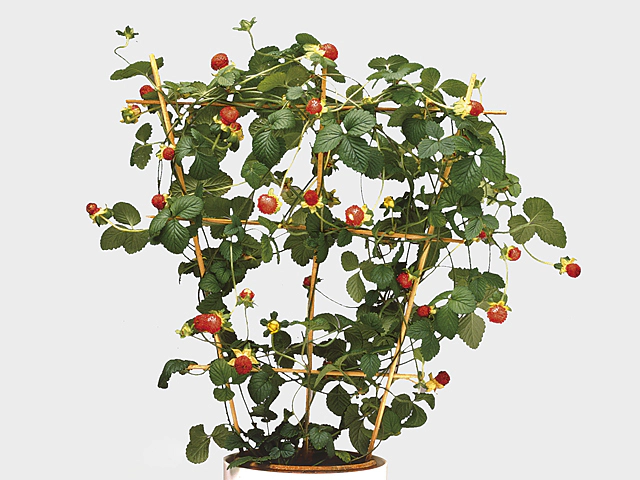Duchesnea indica

| Leaf type | Foliage leaf |
| Winter hardness | Good (USDA-zone 5, 6) |
| Soil fertility | No poor soils |
| Inflorescence | Single-flowered |
| Structure (tissues) | Herbaceous |
| Light conditions | Sunny |
| Moisture requirements | Moist; Well-drained |
Duchesnea indica, commonly known as Indian strawberry, is a versatile plant with various characteristics that make it a valuable addition to any garden. With its foliage leaves, good winter hardiness, and preference for sunny light conditions, this plant is both visually appealing and easy to care for.
One of the key features of Duchesnea indica is its foliage leaves, which add depth and texture to any garden. The leaves are lush green and create a dense carpet-like effect, making it an excellent choice for ground cover. Additionally, the herbaceous nature of the plant's tissues adds an element of softness, making it an attractive option for both formal and informal garden designs.
Duchesnea indica is highly adaptable and can thrive in USDA-zone 5 and 6, indicating its good winter hardiness. This means that the plant can withstand colder temperatures without suffering significant damage, making it suitable for regions with harsh winter climates. Gardeners in these areas can enjoy the beauty of this plant year-round.
Furthermore, Duchesnea indica prefers well-drained soil and can tolerate moderate moisture levels. While it prefers moist conditions, it is important to ensure that the soil does not become waterlogged, as this can lead to root rot. By providing well-drained soil and regular watering, gardeners can create an optimal growing environment for this plant.
In terms of the plant's inflorescence, Duchesnea indica produces single-flowered blossoms. These flowers are delicate and add a touch of elegance to the garden. The blossoms are typically a bright yellow color, attracting pollinators such as bees and butterflies. This makes Duchesnea indica not only visually appealing but also beneficial for the ecosystem by supporting pollinators.
When incorporating Duchesnea indica into a garden, it is crucial to provide it with proper sunlight exposure. This plant thrives in sunny conditions, absorbing ample sunlight for photosynthesis. Placing it in an area with full sun or partial shade will ensure that it receives the necessary light to grow and flourish.
While Duchesnea indica is tolerant of a range of soil types, it does not thrive in poor soils. Therefore, it is important to ensure that the plant is grown in fertile soil. By providing nutrient-rich soil, gardeners can support the plant's optimal growth and overall health.
In conclusion, Duchesnea indica is a versatile and visually appealing plant that offers a range of benefits to any garden. With its foliage leaves, good winter hardiness, single-flowered inflorescence, herbaceous tissues, preference for sunny light conditions, and moisture requirements, this plant is an excellent choice for gardeners seeking an attractive and low-maintenance addition to their outdoor spaces. Whether used as ground cover or in flower beds, Duchesnea indica is sure to enhance the beauty and vibrance of any garden.